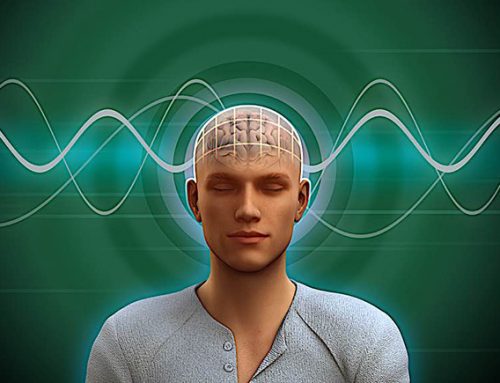Here are 3 different hypnotic induction techniques. The first is based on utilizing a person’s leisure interests, the second is a more structured technique that many hypnotherapists use, that we have refined to make it more effective, and lastly, a technique based on utilizing a previous trance state to re-induce hypnosis.
Trance Inductions Utilising Leisure Interests
People enjoy participating in leisure activities for many reasons but not many people realise that one of the main reasons they enjoy it so much is because they enter a trance state as part of the activity.
Every leisure activity induces a state of receptivity.
Most people enjoy leisure activities. One of the reasons for this seeming addiction to leisure pursuits is the associated state of receptivity that accompanies every leisure activity. All activities are naturally trance inducing. For example, dancing and sports have a trance component in the same way that watching television or listening to music has a trance component. Because leisure activities are desired and experienced by most people, most people are familiar with the trance experience associated with them. However Patients are not usually aware that this particular state of reverie or trance is the same state required for hypnosis. By asking the Patient to think about their leisure activities and informing them that the state associated with their leisure activities is the required state for hypnosis the therapist is helping the Patient realise that they are already qualified to experience hypnosis.
Trance can be induced by recalling the leisure activity.
The therapist should give analogies about trance experience in everyday life. Analogies about ensuing trances that happen spontaneously when one daydreams or watches television can actually re-induce a similar trance state in the Patient. Alternatively, the therapist can direct the Patient to recall one of his own leisure activities. The therapist should judge whether an explicit request to recall a familiar leisure activity is the best way to re-induce trance or whether a more indirect approach based on the therapist’s own leisure interests is more effective. What might work for one Patient may not work for another.
Different leisure activities produce different trance states.
The trance states associated with sports are different from those associated with watching TV and other similar activities. The sports trance is a focused concentration on an activity where all of the senses are tuned acutely towards the activity. The TV trance however is a turning inwards type of trance where the senses are relaxed and not focused externally. Generally speaking, activities such as watching TV, listening to music, reading a book, painting a painting are better for inducing hypnosis than the more highly concentrated types of activities.
Trance is state-bound to contexts and associations.
All activities are state-bound. By state-bound we mean that a Patient enters a particular psychological and physiological state whenever they carry out some activity. When they move from one context or activity to another the psychological and physiological state changes. When they then return to the same activity at a later date they also return to the same psychological and physiological state. This is true of hypnosis. When a Patient re-enters trance he re-enters the same psychological and physiological state that occurred the first time he went into a trance state. By asking a Patient to recall a leisure activity we are re-evoking its associated state enabling the patient to automatically recall the same feelings. Therapists should always remember this principle of state bound experience whenever working therapeutically.
Examples of leisure activity trances:
- Daydreaming.
- Watching television.
- Listening to music.
- Reading a book.
- Concentrating on a task.
- Enjoying a sport.
- Listening to a lecture.
- Dancing.
- Performing music.
- Painting, drawing etc.
Contraindications of utilising leisure trance.
Some people experience trance states when driving a car. The therapist should avoid using the driving trance experience as a hypnotic induction and also avoid discussing it in case the hypnotic trance is indirectly associated (anchored) with future driving. If Patients have driven to a session it is usually a good idea to also suggest that they re-orientate fully before driving home. Associations between hypnotic trance and everyday leisure activities should only be drawn when those leisure activities do not involve danger. Or if you want an ethical hypnotic induction with more of a structure try this:
Hypnotic Induction Using a Visualised Staircase
First time your suggestions with the Patient’s breathing.
As the Patient exhales you should give suggestions for going deeper into trance. If you are counting, then each number that you count should be associated with an exhalation. By telling the Patient they can go deeper with each number, indirectly they will be helping themselves to go deeper simply by breathing. You do not have to count with each breath, you may prefer to count every’ other breath. This will give you the opportunity to intersperse suggestions along with the counting. By counting and pacing your suggestions with the Patient’s breathing you will be reinforcing rapport.
You should utilise all of the Patient’s sensory systems
Because the Patient experiences hypnosis with his visual, auditory and kinaesthetic sense, your induction should have visual inputs, auditory and kinaesthetic inputs. The staircase induction consists of a journey, one step at a time, down a flight of twenty stairs. As the Patient takes this journey he hears the sound of the therapist’s voice, he sees each Stair in front of him, he feels each stair under his foot. You should encourage the Patient to experience this induction in all three sense systems. At the bottom of the stairs the Patient can see a door, this door could be to the left, it could be in the centre or it could be to the right. There are not three doors, there is only one door. The therapist should ask the Patient to notice where the door is. By asking the Patient this it will get the Patient to become more absorbed in the experience. Behind the door is a room with a comfortable chair and as the Patient sits down in the chair he can see a small cinema screen on which appears a very relaxing scene.
During the induction you should slow down your voice, lower your volume, lower your pitch and deepen your tonality.
These changes should occur gradually as the induction progresses. The therapist starts the induction at normal volume and tempo etc. At the deepest part of the trance the therapist should have the maximum alteration to his voice. By changing his voice in this way the therapist is matching the Patient’s experience of going deeper into trance. This also helps the Patient anchor the trance experience to the therapist’s voice. In future sessions the therapist need only talk in this special way and the Patient will start to go back into trance again.
You should appear confident and take your time.
As you are pacing your suggestions and counting with the Patient’s breathing it will be difficult for you to rush. It’s very important that you give the Patient as much time as is necessary to experience the trance state. When you talk to the Patient you should appear confident and knowledgeable. If you communicate doubt through hesitation or lack of confidence then the Patient will pick this communication up. This will cause a loss of rapport and a lack of trust. So always appear confident and take your time.
You should bring the person out of hypnosis by reversing the induction procedure.
This principle doesn’t apply in every case. But in the case of the staircase induction it is very important. It is also a way of learning all of the steps of the staircase induction. When the therapist decides to bring the Patient out, usually after about five minutes, the therapist will ask the Patient to watch the picture on the screen and then to experience standing up from the imaginary chair the Patient is seeing in the trance state and to walk out of the room, out of the door and slowly come up the stairs. As the Patient comes up the stairs the therapist can count backwards from twenty to one. Remember that when there are twenty stairs the therapist counts from one to twenty to go down into trance and from twenty to one to come out of trance. When the therapist counts from twenty to one to bring the Patient out of trance he should time the numbers with the Patient’s inhalations this time. Likewise the therapist’s tonality, pitch, volume etc. should change in accordance with the depth of trance as the Patient comes out. The therapist’s voice should get louder, the tonality should harden, the pitch should rise until the voice sounds perfectly normal as in everyday conversation. When the trance has been terminated thank your Patient and ask for their experiences. How about something very simple – if the client has been hypnotised before:
Hypnotic Induction Based on Recalling a Previous Experience of Hypnosis
Trance can be induced by recalling appropriate trance contexts and associations.
By talking about previous times when the Patient actually was hypnotised the therapist can help the Patient re-access the appropriate psychological and physiological state associated with the earlier trance experience. The therapist requests that the Patient remember what happened in the hypnotic context thereby bringing back memories associated to feelings, the feelings are directly the result of the change in psychological and physiological state induced by the recall of memories of the trance. This is possibly the quickest form of hypnotic induction available. Simply by requesting that the Patient recall a previous trance the trance is re-induced.
Always use a positive and successful example of a previous trance.
When you first meet your Patient, ask them if they have been hypnotised successfully before. Ask them what it was like and whether it was beneficial. If the previous experience was positive then you can use that induction as a re-induction procedure. All you need to do is ask the Patient to recall the trance induction as you slowly feed back their words, re-capping the stages of the trance induction and compounding their experience by emphasising their minimal cues.
Rapid Inductions
What is all this talk about rapid inductions? It seems that everywhere you look on the Internet you see people offering to teach “rapid inductions”. What does a rapid induction demonstrate other than the hypnotist’s need to prove that he has the power to put someone into hypnosis quickly? It’s about the hypnotist’s ego, it’s not about helping the client. I see very little therapeutic benefit in putting someone into hypnosis in such a controlling way.
Our approach taught at British Hypnosis Research is based on respectfully helping clients resolve their problems for themselves at an unconscious level, and with the hypnotherapist’s role perceived as an observer of the therapeutic process. We want our clients to leave the therapy session believing that they were responsible for their changes themselves and that they don’t have to submit to someone zapping them into an altered state, taking over their mind and reprogramming them to be someone else. We want to empower clients, not dis-empower them.
Rapid inductions, direct and authoritarian hypnosis techniques and stage hypnosis is for entertainment only and has no place in a responsible hypnotherapy practice. If you want an effective yet indirect and respectful hypnotic induction technique, learn how to put clients into trance with the above techniques.




